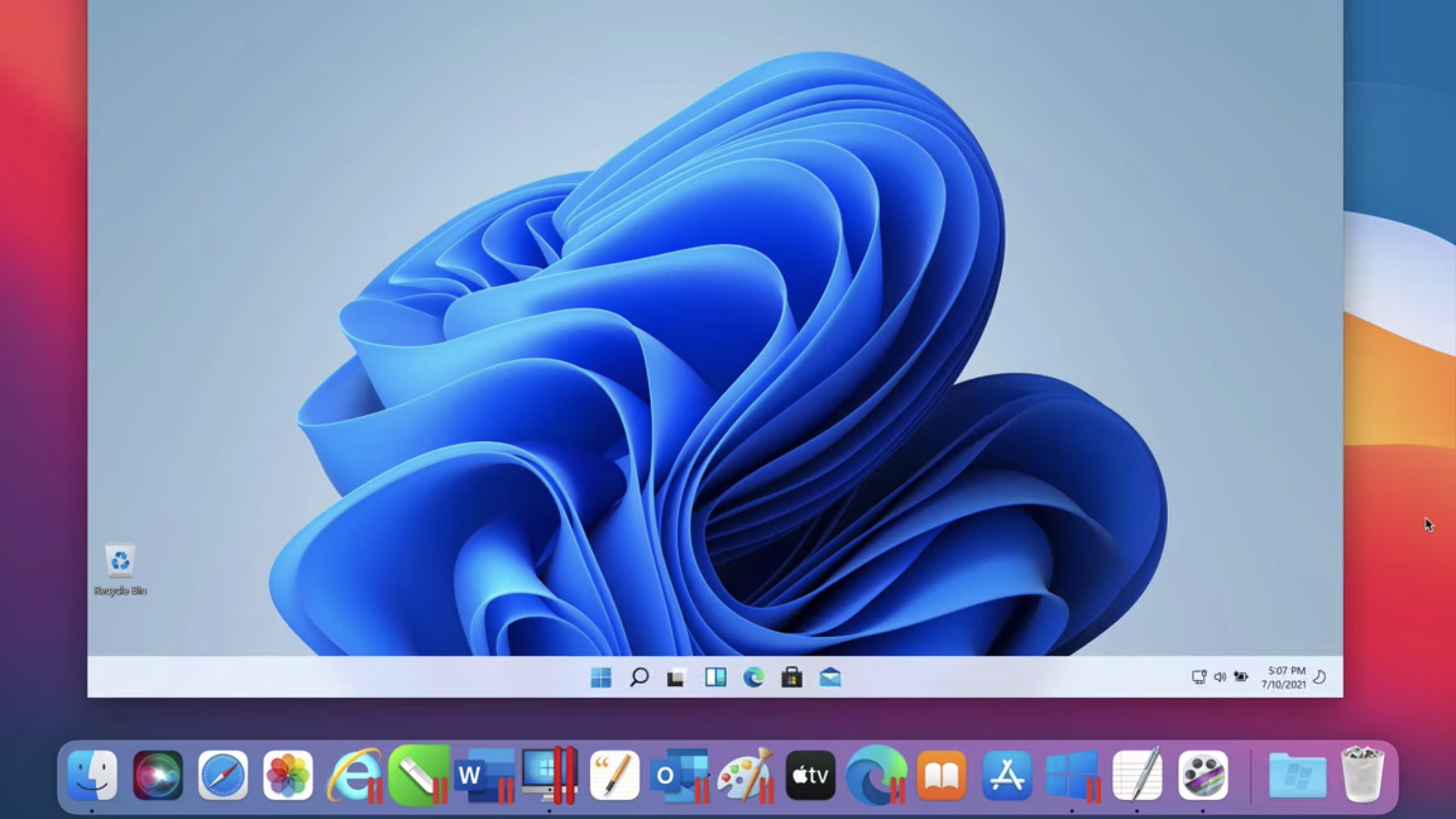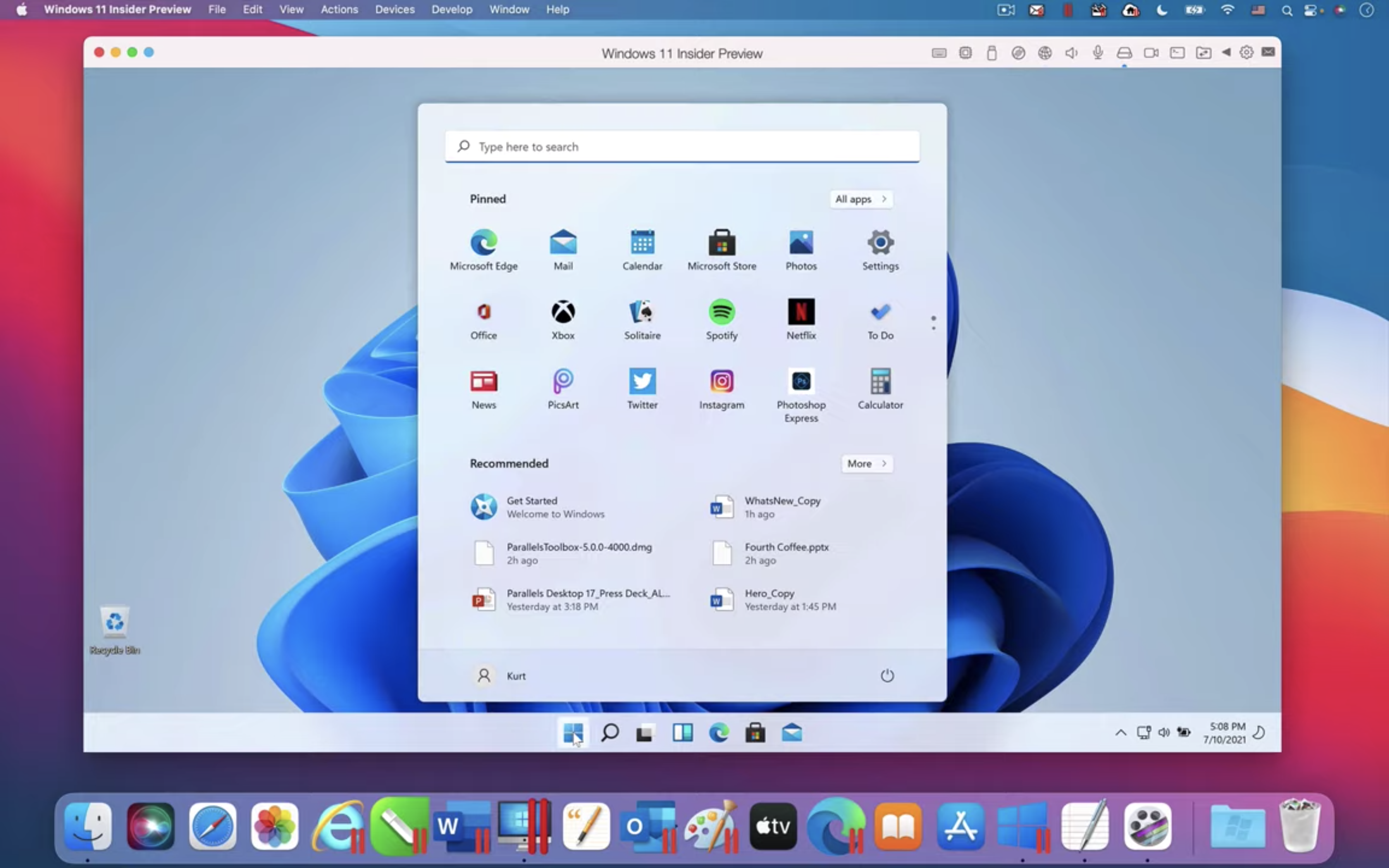You can now run Windows 11 on a Mac — here's how
Parallels Desktop 17 brings Windows 11 to both Intel and M1 Macs

Both Intel and M1 Macs can now run Windows 11, thanks to Parallels Desktop 17 — the latest version of Parallels' virtualization suite.
Parallels confirmed it was working on bringing Windows 11 to M1 Macs earlier this year, and sure enough the final release can run Windows 11 (in a window) on both types of Macs. It even supports Windows 11 Insider Preview builds, and is ready to work with macOS 12 Monterey once it launches this fall.
- Find out the Windows 11 requirements for PCs
- How to install Windows 11 on Windows 10 systems
- Plus: Apple Child Safety photo scanning — how it works and why it's controversial
Parallels Desktop 17 takes a different approach to Boot Camp, Apple's way to get both macOS and Windows running on a Mac. Instead of installing Windows on a partition of your computer’s storage, Parallels Desktop creates a virtual machine (VM) and installs Windows on that. This makes it possible to effectively run both operating systems simultaneously, even allowing to you drag and drop items between macOS and the Windows … window.
There is a catch for those with M1 Macs, however. Because the M1 chip is ARM-based, you’ll essentially be installing a version of Windows 11 that’s being emulated by ARM. This brings with it all the occasional wonkiness of using Windows on any other ARM processor: some apps may not perform as well as if they were running natively on Intel hardware, while other apps may not be compatible at all.

Still, Microsoft is working on improving compatibility, even releasing a native 64-bit ARM version of Office. And this could, in turn, make running Windows 11 on M1 Macs even easier. Parallels Desktop 17 also makes various performance improvements specially for M1 Macs: Windows can apparently start up 33% faster on M1 hardware compared to Parallels Desktop 16, while DirectX11 can run up to 28% faster and storage performance is up to 20% faster.
You’ll need to pay for privilege, though. Parallels Desktop 17 starts at $79 for the Standard Edition, and if you want a VM with more than 8GB of virtual memory, you’ll need the Pro or Business Editions, which are both ongoing subscriptions at $99 per year.
- More: Windows 11: Inside the dramatic redesign
- How to check Windows 11 compatibility if PC Health Check doesn't work
Get instant access to breaking news, the hottest reviews, great deals and helpful tips.

James is currently Hardware Editor at Rock Paper Shotgun, but before that was Audio Editor at Tom’s Guide, where he covered headphones, speakers, soundbars and anything else that intentionally makes noise. A PC enthusiast, he also wrote computing and gaming news for TG, usually relating to how hard it is to find graphics card stock.
